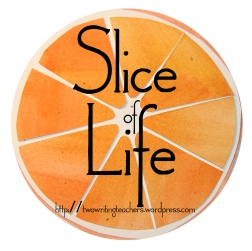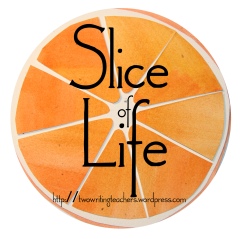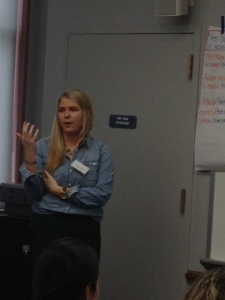How to write this final post of the 2014 Slice of Life Challenge? Yesterday’s post was reflective and full of thanks to everyone who made this challenge possible and who encouraged me through their generous comments. I had planned to do a standard “It’s Monday! What Are You Reading?” post, but as often happens, life intervened and I knew that plan wasn’t going to work.
I spent much of the day revising our fifth grade poetry unit and thought I could write about that, but that didn’t seem appropriate for my final slice. “In the end,” I decided to use a list poem (another list!) I read today, “Things To Do If You Are The Sun,” by Bobbi Katz, as a model for a poem that sums up how participating in this challenge has changed me as a writer.
Things To Do If You’re a Writer
Let words envelop you and swirl inside your head.
Look at a flower bud and see a diver poised on the brink of the board.
Hear an owl hooting and wonder what coded message he’s sending out
into the night.
Bite into a pear and taste summer in its sweetness.
Touch a puppy’s ear and feel the satiny edge of a well-loved blanket.
Breathe in the late winter air and sniff a hint of spring.
Gather these bits and pieces, like a magpie, and weave them
into something wonderful.
Share your creation with friends, who, through reading your words,
know what is in your heart.
© Catherine Flynn, 2014
Thank you, everyone, for an amazing month.
If you’d like to read “Things to do if You Are the Sun,” it can be found in Falling Down the Page: A Book of List Poems (Roaring Brook Press, 2009), edited by Georgia Heard. If you’d like to read other list poems and gather more ideas for using them as mentor texts with children, read Elaine Magliaro’s post at Wild Rose Reader.



































